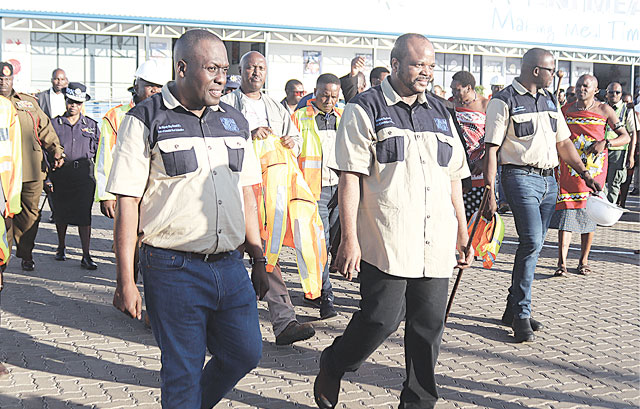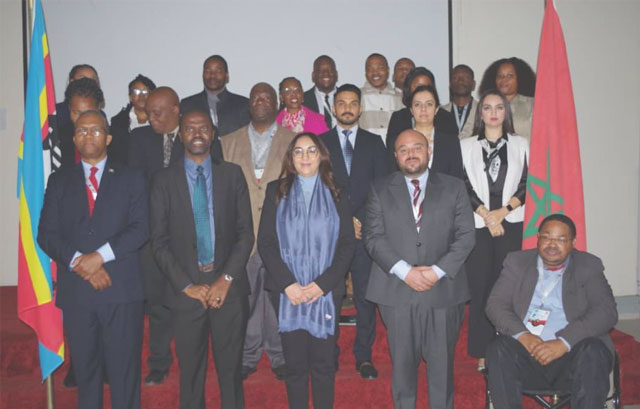By Siphesihle Nkwanyana | 2024-05-24
Tackling inequalities is how the world will end AIDS, so it is vital to know what type of inequalities exist in each country and how are they affecting the national AIDS responses.
That is what a new UNAIDS inequalities visualisation tool is set out to measure.
The new tool will allow countries, development partners, civil society, academia, and advocates to see and measure the effects that different dimensions of inequalities have on the HIV response.
“One of the best ways to translate complex data is to show it visually. This tool allows the user to summarize critical inequalities in a snapshot,” said Mary Mahy, Director, Data for Impact Practice at UNAIDS.
Integrated in the UNAIDS AIDS info database, which is a repository of all HIV data globally, the new inequality platform brings together data from household surveys like Demographic and Health Surveys (DHS) and Population-Based HIV Impact Assessment (PHIA), plus surveys among key populations and UNAIDS epidemiological estimates.
The tool measures inequalities by characteristics such as age, gender, wealth, education, geographic location and residence, and allows users to see the combined effects of up to three dimensions of inequality. Some of the deepest, thorniest pandemic-driving inequalities continue to obstruct progress in the HIV response.
Inequalities driving the AIDS pandemic are not inevitable. Policies can overcome them. For example, in sub-Saharan Africa, adolescent girls and young women are 3 times as likely to acquire HIV as adolescent boys and young men.
To help overcome this inequality, countries need to offer prevention services that are adolescent-friendly and targeted at young women at highest risk of HIV acquisition.
Similarly, the new tool shows how access to services differs for residents of urban and rural areas, and how among key populations, younger people usually have lower access to HIV services that their older peers. In Zambia, for example,
HIV treatment coverage among rural residents was 9% lower than residents of urban areas. In Malaysia, access to HIV testing among people who inject drugs who were younger than 25 years old was 50 per cent lower than their older peers, and in Thailand, HIV prevalence among male sex workers has been consistently several times higher than female sex workers.
By using the evidence provided by this new tool, countries will be able to identify the inequalities affecting their epidemic and response and make the necessary changes in their policies and programmes to address them. UNAIDS will be updating the data in this tool on an annual basis, allowing countries to measure the effect of their policies and programmes as data become available.
Let us double our
efforts for Eswatini
HIV is associated with increased experience of violence: people living with HIV, including women living with HIV, and key populations, including women key populations, experience high levels of GBV.
This has a grave impact on their rights and wellbeing and undermines the HIV response.
Across their lifetime, one in three women, around 736 million, are subjected to physical or sexual violence by an intimate partner, non-partner or both, however, this figure would be even higher if it included other common forms of violence such as sexual harassment.
In addition, many violent acts are not reported, recorded, or included in global estimates. Women live this reality every day, and this is particularly true for women and girls who experience intersecting forms of discrimination, and inequalities.
Gender diverse individuals such as lesbian, bisexual, and transgender women face disproportionate levels of violence at the hands of both strangers and intimate partners. Often this violence is fueled by laws that criminalise same-sex relations and gender non-conformity.
Moving forward, ending the AIDS pandemic as a public health threat-in eSwatini will require additional investment and a relentless focus on addressing gender-based violence, gender inequalities and other social and structural biases that make high risk populations vulnerable to infection and keep them away from HIV prevention, treatment and care services.
In addition, punitive laws that criminalise and marginalise vulnerable groups of people are denying the right to health to these groups of key populations and holding the HIV response back.
The evidence is clear, protecting the safety and human rights of marginalised people expands access to HIV services, accelerating progress in the response to HIV by increasing the number of people on treatment, widening access to prevention tools and reducing new infections.
Together, it is possible to end AIDS by 2030 but only if governments act now to equalise access to HIV services for everyone. Tackling inequalities will not only help the marginalized, it will help everyone.
Let us double our efforts and unite all Emaswati as we forge ahead in the fight to end AIDS by 2030. As UNAIDS Eswatini together with NERCHA, we reiterate our commitment and support to the Government of Eswatini and all other stakeholders as we continue with the fight, especially now in our last mile to end AIDS by 2030.
share story
Post Your Comments Below

Eswatini Meat Industries (Embiveni) in a bid to recapture its former glory has invested E350 mill...

HIS Majesty King Mswati III wants government to build cargo terminals at the KMIII International ...

SOCCER - THE Premier League of Eswatini (PLE) has confirmed that top performers during the 2023-2...

ESWATINI and the Kingdom of Morocco have signed a Memorandum of Understanding (MoU) on visa waive...
All material © Swazi Observer. Material may not be published or reproduced in any form without prior written permission.
Design by Real Image Internet